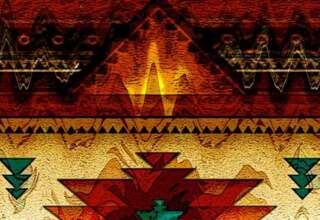
In 1892, discussion by the United States federal government led to the political assimilation of Plains Ojibwa and Métis; they were now seen as one political group. They remained two distinct groups towards each other despite the federal government’s decision. As a result of the Northwest resistance, many Métis of Saskatchewan went to Turtle Mountain to stay with relatives, increasing both numbers and tensions on the reservation. Those living on the reservation did not have adequate space and the overcrowding caused a faster decline in the resources available on the land, resulting in deaths due to starvation and disease. Harsh climates on the reservation made the living conditions very difficult. Cold winters and dry summers made agriculture very difficult and the numbers of bison declined rapidly. This reduction of available resources caused further tension between Métis and plains Ojibwa.
In 1904, an agreement was put into effect between the Turtle Mountain Band of Chippewa Indians and the government of the United States. This became the McCumber Agreement and was signed by the Turtle Mountain Band of Chippewa Indians in 1905. The McCumber Agreement stated that the people of Turtle Mountain would sell the land of the reservation of a price of $1 million. As this was not considered to be a great deal of money, it was also named the “Ten Cent Treaty”. There was much resistance from the people of Turtle Mountain towards the implementation of this agreement. In 1920, the population of Turtle Mountain formed a committee to sue the United States for the failures of the McCumber Agreement. According to the committee, the federal government took 10 million acres of land at 10 cents per acre and created a reservation with diminishing resources, with no improvements being made to crowded living conditions, starvation, poverty, and disease.
Constitution
In 1932, a tribal constitution was implemented on Turtle Mountain, 27 years after the signing of the McCumber Agreement. The people of Turtle Mountain were informed that the implementation of this constitution would make their claims clear to the federal government. The constitution ended up giving much power to the United States federal government. As a result of this, the constitution was not accepted by the Turtle Mountain Band of Chippewa Indians, as in their view it did not respect the community. In 1934, the Turtle Mountain Band of Chippewa Indians were against the establishment of a new constitution by the Indian Reorganization Act. The Indian Reorganization Act was still passed in 1934, two years after the establishment of the constitution, claim that its goals were to reestablish tribal governments.
The population of Turtle Mountain is still governed by the 1932 constitution. In 1946, claims were filed with the Indian Claims Commission, and despite the slow process, the people of Turtle Mountain won a claim surrounding the impacts they faced as a result of the McCumber Agreement. Despite this, poor living conditions on the reservation persisted and the average household income on the reservation remained far below that of the rest of North Dakota. A vote in 2002 rejected a new constitution, and another vote the following year in 2003 resulted in an even greater rejection of a new constitution.[3]
Economy
Turtle Mountain Reservation economic conditions are largely centered on government. The government of the Turtle Mountain Reservation employs 854 people. The local tribal casino, owned by the Turtle Mountain Reservation government, has a workforce of 300 people. In the private sector, it is estimated that there are at least 135 Indian-owned businesses on and around the Turtle Mountain Reservation. According to the Bureau of Indian Affairs, the unemployment rate of the Turtle Mountain Reservation in 2010 was 69.25 percent. In that same year, approximately 40 percent of families living on the reservation were living below the poverty line. Due to a difficult local labor market, many families had issues relocating from the reservation into nearby cities, resulting in the eventual return of 45 percent of those leaving the reservation.






